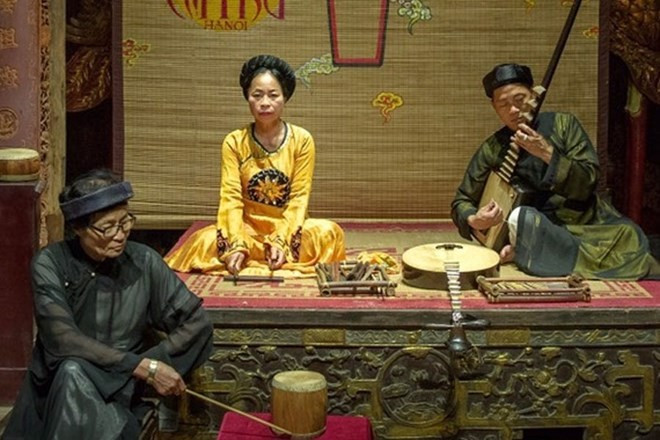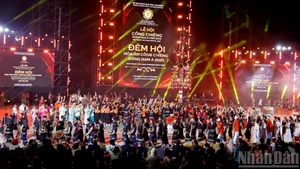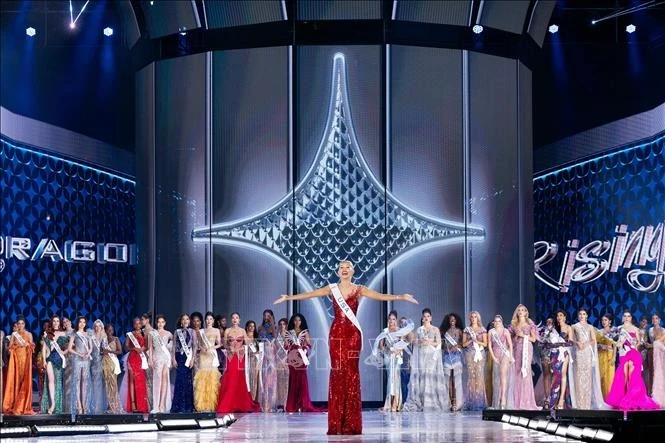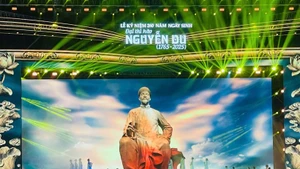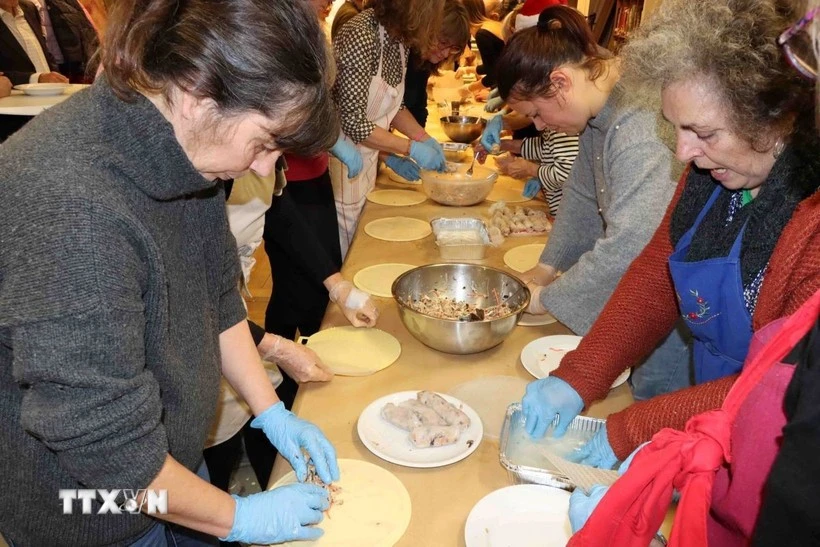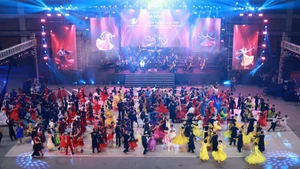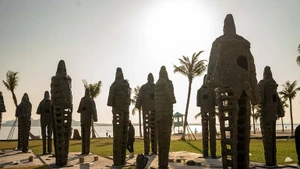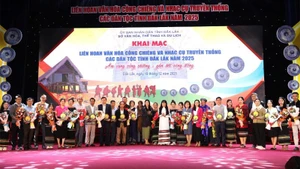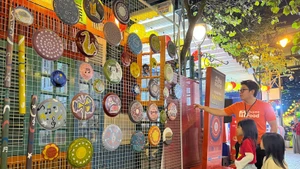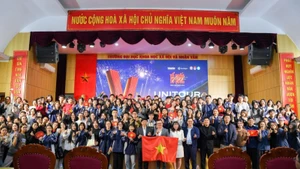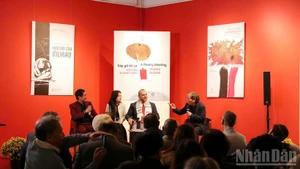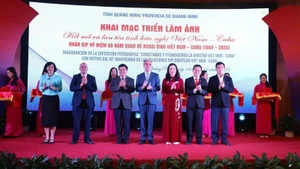Q: What first drew you to ‘ca tru’?
Meritorious Artist Bach Van: It felt like destiny – I can hardly explain it. One day, I heard artisan Quach Thi Ho singing on the radio, and I was utterly mesmerised, as if an electric current had run down my spine.
I had studied opera, excelled in literature and poetry, and harboured other dreams, but from that moment, I knew my true calling.
Q: Were there challenges when you began your journey with ‘ca tru’?
A: Many. Some people looked at me as though I were sleepwalking. Others mocked me, saying I was “reviving feudal remnants.” One cultural official even shouted in my face: “Who do you think you are, bringing back that old courtesan singing?” They failed to understand that ‘ca tru’ is a scholarly art, once performed in imperial courts and temples. Renowned literati such as Nguyen Cong Tru and Cao Ba Quat composed exquisite poetry for ‘ca tru’.
Some organisations refused to grant permission for performances. But I knew that if I didn’t act, no one else would dare. I travelled to ancient villages and traditional ‘ca tru’ regions in provinces like Hai Duong, Bac Giang, Thai Binh, Nam Dinh, and Thanh Hoa to seek out artisans, learn from them, and document their knowledge – preserving even the faintest breath of this art form.
Q: In 1991, you organised the first public ‘ca tru’ performance at the Temple of Literature. What gave you the confidence to do so?

A: I wasn’t sure it was “the right moment.” I simply felt that if I waited any longer, some of the last artisans might pass away. I printed the invitations myself and invited veteran artists, including those who had performed at the Ha Noi Opera House before 1945.
Over 200 people attended. It was the first time in many years that ‘ca tru’ stepped into the light to reach a public audience.
Soon after, the Ha Noi Ca Tru Club was founded, and I became its head – because no one else dared to take the lead.
Nine years later, in 2000, we held the first Ha Noi Open Ca Tru Festival, which was a great success. I lost count of the audience, but I could feel it was far larger than in 1991.
Q: You once said ‘ca tru’ is “impossible to sing without deep understanding.” Could you explain what you meant?
A:‘Ca tru’ is not merely sound. It is an ancient knowledge system that blends poetry, music, philosophy, and ritual. To sing it properly, performers must understand why each syllable is extended or paused, why the beat must fall precisely at certain moments.
The singer is also a ritual master – a guardian of cultural values. Without this understanding, the performance becomes hollow.
Q: Life must be demanding when you manage everything alone. How do you cope?
A: As long as I can sing, I feel immortal. There were times I fell ill or had accidents. Doctors told me to rest, but if there was a performance, I felt reborn. Some saw me receiving IV drips in hospital in the morning, then performing on stage that same evening – that was normal for me.
I live frugally to support the ‘ca tru’ club. All income from teaching and performing goes into preservation efforts. I chose this path without regret or complaint.
The soul of ‘ca tru’ must endure. It is not just music – it embodies the spirit of the Vietnamese people: elegant, profound, and unique.
Q: After more than 40 years with ‘ca tru’, do you feel fulfilled?
A: I don’t live for fulfilment; I live to keep ‘ca tru’ alive. The older artisans I met – some now gone, others frail – entrusted me with the soul of this art. I may not live long or gain widespread recognition, but if the younger generation continues to carry the flame, that is enough.
The soul of ‘ca tru’ must endure. It is not just music – it embodies the spirit of the Vietnamese people: elegant, profound, and unique.
Q: Are you concerned about the future of ‘ca tru’?
A: I am. I see many young people learning just to pass exams or perform, without grasping its roots. I worry about the commercialisation and dilution of ‘ca tru’ on stage.
Most of all, I worry that Vietnamese people are growing distant from their own music. But I believe that if true lovers remain,‘ca tru’ will survive. It has endured wars, bans, and being labelled “remnants” – it will survive modern times if we continue to nurture it.
Thank you for sharing your story.
‘Ca tru’, also known as hat a dao or hat noi (ceremonial singing), dates back to the 15th century. It was listed by UNESCO as a cultural heritage in need of urgent protection in September 2009.
The most widely known and performed version of 'ca tru' features three participants: a female vocalist, a 'dan day' (three-string lute) player, and a spectator who strikes the ‘trong chau’ (praise drum).
